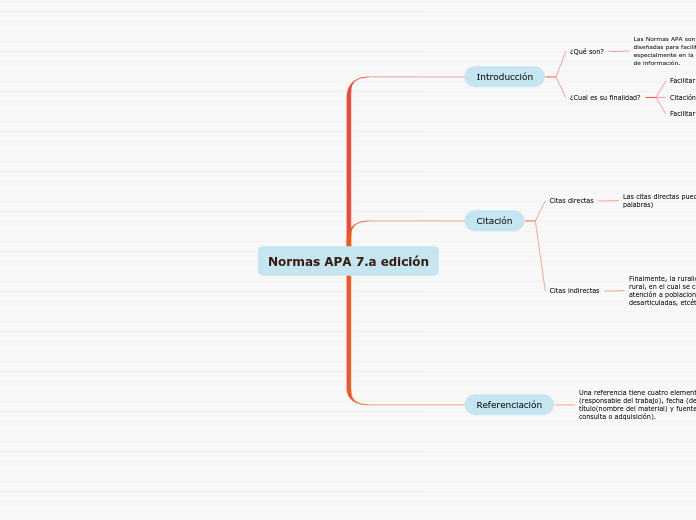a Pablo Manuel Infantes soto 5 éve
1481
Normas APA 7.a edición

a Pablo Manuel Infantes soto 5 éve
1481

Még több ilyen

To name your story, you have to think about the overall message and what you want your audience to understand from the story. Also, make it relevant and easy to remember.
The ending of a story is essential. We all know that if the ending is weak, what happened before loses its importance. So make it unpredictable, but fair. A resolved ending answers all the questions and ties up any loose threads from the plot.
Rodríguez, M. (2020, 27 de junio). Joseph Schumpeter, el hombre que predijo el fin del capitalismo y que es clave para entender la economía de hoy. BBC Mundo. https://bbc.in/3isGkCj
Barreto, A.G.(2015).Fundarvid: una contextualización de sus neologismos en la lengua de señas colombiana [tesis de maestría, Universidad Nacional de Colombia]. Repositorio Institucional UN. http://bit.ly/2JHcwSV
This is the closure section of the story.
See examples of possible outcomes below:
Berrío, P. A. (2018). La muerte de Andrés Valdivia, primer gobernador de Antioquia, 1569-1575. Instituto Colombiano de Antropología e Historia.
Try answering these questions in order for you to come up with a closure:
- Have all problems been solved?
- Is it clear what happens with all your characters in the story?
- Has the challenged transformed your main character?
- How do the characters feel in the end?
This is the moment when the main character surpasses the last obstacle and finally faces their greatest challenge.
The climax usually follows one of these patterns:
Type in your answer.
Osorio-Delgado, M. A., Henao-Tamayo, L. J., Velásquez-Cock, J. A., Cañas-Gutiérrez, A. I., Restrepo-Múnera, L. M., Gañán-Rojo, P. F., Zuluaga-Gallego, R. O., Ortiz-Trujillo, I C. & Castro-Herazo, C. I. (2017). Aplicaciones biomédicas de biomateriales poliméricos. DYNA, 84(201), 241-252. https://doi.org/10.15446/dyna.v84n201.60466
The middle of the story is where you add layers of complications that will lead to the end. Reveal more about the character's journey. Did their personality go through changes? How did they overcome the challenges? And as you build up the story’s central conflict, make it more personal to that character. Also, from the middle act, you have to lead into the final act.
Your character(s) need(s) motivation in order to solve the challenge(s).
Secondary characters also might have motivs beacuse of which they may cross path with main character or which might trigger them to help the main character.
Each story has a main character and that character usually needs to solve a problem or challenge. The character's challenge is the one that creates tension throughout the story.
Type in any other challenges which other characters in the story need to face.
Cita en bloque
Jurídicamente estaba justificado el asalto a las tierras de los indios. Entre el año de 1750 y el de 1800, época en que las comunidades indígenas del oriente colombiano fueron objeto de una política de agregación-segregación de tierras, el monto de las ventas de unos 68 resguardos fue de 110 308 pesos aproximadamente. (Tovar, 1986, p. 23)
Cita corta
La ira es considerada como una simple reacción humana, y el pecado de la ira depende del grado en que se manifieste: “Cuando el movimiento instintivo pasional de la ira se despierta, nos ciega, nos estupidiza y nos convierte en una especie de bestias obcecadas. Ese exceso es perjudicial, pero yo creo que un punto de cólera es necesario” (Savater, 2005, p. 81).
In the beginning of the story (or the exposition), you will need to introduce the setting and characters. You might also want to introduce the main conflict. This part of the story is important because it gives the reader necessary background information and maybe even a first insight into a character’s personality.
The setting (time & place) of a story can change throughout the plot.
Sensory details include sight, sound, touch, smell, and taste. These details are important because they create depth in your setting.
See a few examples below:
The weather is an important element in your story because it can highly influence the ambiance and the mood of the characters.
Your story can take place wherever your imagination will take you to.
For example: in an elevator, in an enchanted forest, etc. Don't forget to give details of the environment each time the setting changes, otherwise, the story can be confusing. Also, mention the seasons as each of them has unique weather and events.
Characters are essential to a good story. Usually, the protagonist(s) is/are the most affected by the plot. Introduce a character by focusing on their actions, interests, and occupation, as the physical appearance doesn't make a difference in most cases.
Type in the name of your character.